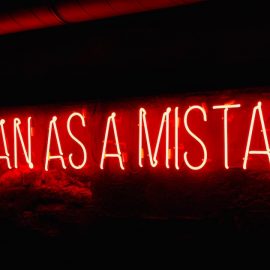

This article is an excerpt from the Shortform book guide to "Superforecasting" by Philip E. Tetlock. Shortform has the world's best summaries and analyses of books you should be reading.
Like this article? Sign up for a free trial here .
What is belief perseverance? Why do people find it so hard to give up their beliefs even in the face of contradictory evidence?
Belief perseverance is the tendency to maintain a belief in spite of evidence that firmly contradicts it. It is difficult to overcome, especially when it comes to beliefs that are tied to our self-image.
Read about the dangers of belief perseverance.
What Is Belief Perseverance?
The tendency to cling to our beliefs even in the face of contradictory evidence is called belief perseverance. One way to visualize belief perseverance is to think of self-image as a Jenga tower. In the game of Jenga, building blocks are stacked into a tower, and players take turns trying to remove blocks without collapsing the whole tower. Removing blocks near the outside or top of the tower usually doesn’t send the whole structure tumbling down. These outer blocks are like the minor beliefs we hold—if they’re proved wrong, we can remove them without suffering much damage to the ego. But removing a block at the very center of the tower (or a core belief at the center of our self-image) is much harder to do without disrupting the whole tower.
- Belief perseverance can be a dangerous force. In 1942, in the wake of the attack on Pearl Harbor, future U.S. Supreme Court Justice Earl Warren spearheaded the plan to forcibly imprison every person of Japanese descent living in the United States. Within six months, 112,000 people had been removed from their homes and stuffed into overcrowded internment camps. When years passed with no evidence of any Japanese Americans acting as spies for Japan, Warren still insisted that the threat was real and ending the internment policy would put the country at risk. No such threat ever materialized.
- Today, Warren is remembered as a relatively liberal Chief Justice who oversaw landmark civil rights cases during his tenure. (Shortform note: Warren wrote the majority opinions for Brown v. Board of Education and Loving v. Virginia.) How could the same man have promoted a racist internment policy? This is the power of belief perseverance: Warren publicly committed to a controversial idea and backing down would have been a serious blow to the ego.
Thankfully, the consequences of belief perseverance aren’t always so dramatic. Most people do shift their views in the face of overwhelming contradictory evidence, but only slightly. In other words, if we encounter convincing evidence about an issue where we have no prior belief, we’re much more willing to accept it than we are if we first have to give up our old beliefs.

———End of Preview———
Like what you just read? Read the rest of the world's best book summary and analysis of Philip E. Tetlock's "Superforecasting" at Shortform .
Here's what you'll find in our full Superforecasting summary :
- How to make predictions with greater accuracy
- The 7 traits of superforecasters
- How Black Swan events can challenge even the best forecasters






